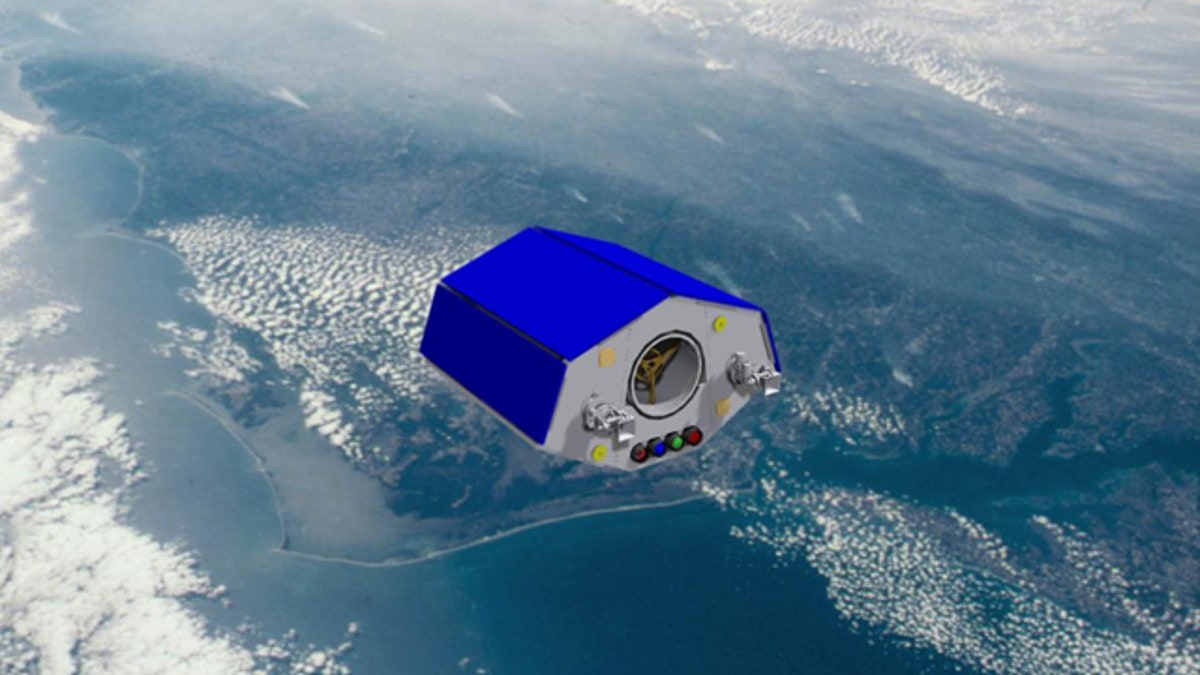
An artist's impression of NigeriaSat-2 in orbit. (Surrey Satellite Technology Ltd/EADS)
ABUJA, Nigeria – Nigeria launched NigeriaSat-2 and NigeriaSat-X into orbit Wednesday morning from a Russian launch pad in the town of Yasny, President Goodluck Jonathan said on state-run television -- observation satellites to monitor weather in a region seasonally ravaged by disasters.
Jonathan described the event as "another milestone in our nation's effort to solve national problems through space technology."
The satellites could have a variety of applications, authorities said, which include monitoring disaster-prone areas in a country that stretches into Africa's Sahel, a belt of land on the Sahara Desert's southern fringe that sees extreme weather conditions. It experiences severe droughts in the dry season and devastating rainfall in the wet season. Floods last year displaced about 500,000 people nationwide, with most of them in the Sahel region.
Authorities said NigeriaSat-2 can detect anything wider than 8.2 feet (2.5 meters), such as cars. That means the satellites also could be used for military and intelligence purposes.
The satellite launch also spotlights Nigeria as a main African player in space technology development, rivaling countries such as South Africa and Algeria, which also have space programs. Despite the strides Nigeria's space technology industry has made in recent years, it remains largely dependent on other nations' technology.
NigeriaSat-X was built by a team of Nigerian engineers and scientists at Surrey Satellite Technology Ltd. in the United Kingdom, while NigeriaSat-2 was built in collaboration with the U.K. company's team, said Felix Ale, a spokesman for the National Space Research and Development Agency.
Nigerian officials hope this launch goes better than the country's last.
In May 2007, Nigeria launched its first communication satellite, built by a Chinese team and launched from a Chinese pad. NIGCOMSAT-1 was expected to provide phone, broadband Internet and broadcasting services in Africa's most populous country, but it was lost in space just over a year later. Authorities said a replacement satellite will be launched before the end of the year.
